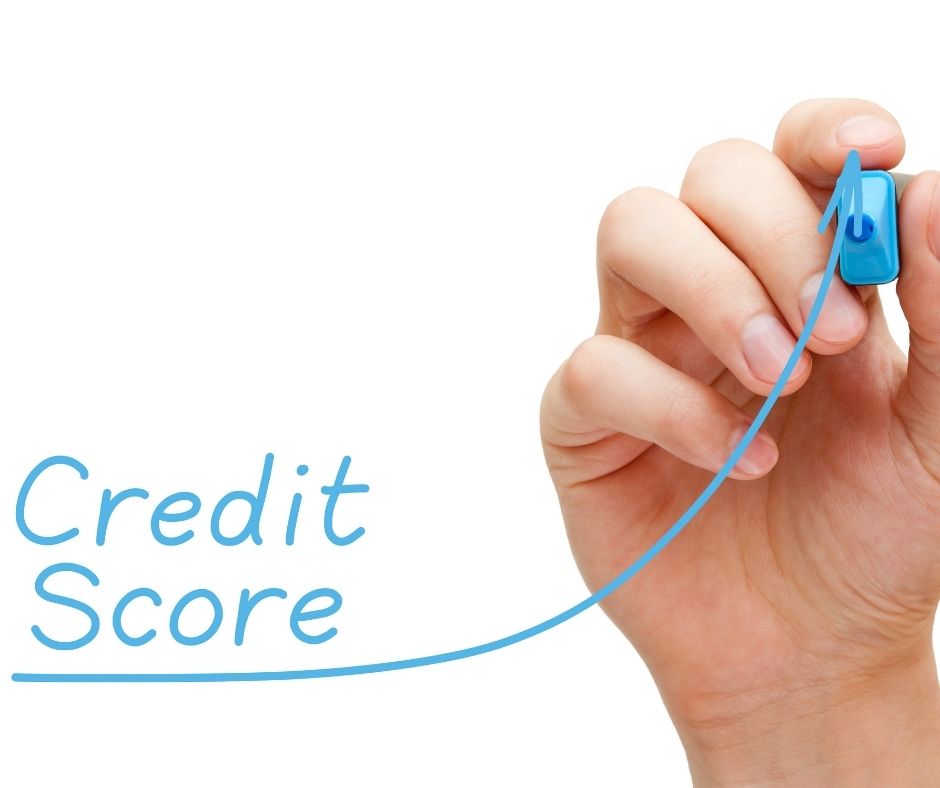Do You Need to Fix Your Credit to Buy Land?
You will have to fix your credit if you wish to buy land and the requirements are often stricter than they are for buying a house. So, you need to be aware of this fact before you invest in a property. You will also need to learn more about the financing involved in purchasing land for residential, recreational, agricultural, or commercial purposes. In this blog, movemystuffinterstate shares how to fix your credit to buy your land.
Reasons for Purchasing Land
When buying land in USA locales, you will find you have a number of properties from which to select. Land may be bought for:
- Running a ranch
- Growing hemp
- Constructing a commercial site
- Growing crops
- Hunting
- Developing aski area
- Building a house
- Buying a lakefront property
Getting Financing for a Land Purchase

To get the purchasing process started, you need to take out a land loan. A land loan is used to finance the purchase of land for building a house or using the loan for commercial or agricultural purposes. The type of financing you elect to use depends on your reason for using the land and where it is located.
Land Loans versus Construction Loans: The Difference
A land loan differs from a construction loan, as a construction loan is used for people wishing to build a home immediately. Therefore, a construction loan represents short-term financing so a prospective home builder can commence building. Everything is usually established and the building plans are in place.
On the other hand, a land loan is used to build a future house whose plans have not been developed or are in the beginning stages of development.
What Types of Land Financing Are Available?
Land financing may take the form of a raw land loan, unimproved land loan, or improved land loan.
Raw Land Loans
Raw land loans represent loans for land that is totally undeveloped. In other words, the land does not include electricity, paved roads, or sewers.
This loan can be difficult to get with a good credit score, let alone a bad credit rating. Therefore, you need to have stellar credit and a detailed plan for the building. Doing so will show that you are committed to the development so lenders view you as less of a risk.
To further enhance your chance for qualification, it helps to make a down payment of at least 20% and, again, have good credit. Good credit means having a score of at least 720. While raw land is usually less expensive than land that is developed, the loans attached to the property feature higher interest rates.
Unimproved Land Loans
Similar to raw land financing, unimproved land loans do feature more developments, such as roads and utilities. However, the land may lack a natural gas meter or meter for electricity.
Like a raw land loan, you need to submit a detailed plan for developing the land and a sizable down payment (again, 20% or more). It’s highly unlikely you will receive financing without a high credit score.
While the interest rate is typically not as high as a raw land loan, it still is higher than most types of financing.
Improved Land Financing
The land purchased with an improved land loan normally features utilities, such as water and electricity, as well as paved roadways. Because the land is developed, it normally is more expensive.
However, the down payment and interest rates are lower than what they are for undeveloped or unimproved properties. Nevertheless, you still need to make a substantial down payment and have a high credit rating.
So, how do you make sure you have a creditworthy status? How do you fix a credit score that will lower your chances for approval?
Fixing Your Credit Score to Purchase Land

Your credit score can make or break a deal for buying land. When your credit score is high, you receive preferential treatment from a lender. Not only are you approved more easily, but you will also pay lower interest rates and fees.
Credit scores are calculated by the three credit bureaus, or TransUnion, Experian, and Equifax - each of which has its own algorithms for figuring credit ratings.
Scores range from 300 to 850. While TransUnion may provide a credit score of 650, Experian or Equifax may calculate your score as 635. Therefore, don’t worry if you don’t come up with the same score as your lender. He or she will reference the credit bureau they normally use.
While an average credit rating is about 700, excellent credit is considered to be 800 or more. Anything under 600 is a poor credit score.
How to Improve Your Credit Rating
To improve your credit rating, you should request a free copy of your credit report from each of the three bureaus, checking each report for incorrect recordings.
You cannot improve your credit score without referencing this information. After all, it is difficult to improve your score if you don’t have all the details.
What Credit Reports Contain
Credit reports highlight the following:
- Debts reported by lenders
- Payment histories associated with the debts
- Tax liens, from public records
- Accounts covering medical costs, utilities, and taxes sent to collection companies
- Credit inquiry history
Each time a report is pulled, the activity becomes part of the report. If you see inaccuracies, you need to correct them immediately.
Correcting Credit Report Mistakes
To correct errors on your credit report, you need to send a dispute to the company that gave the information to the credit bureau as well as the credit bureau. Both parties must correct mistakes or incomplete data on credit reports pursuant to the Fair Credit Reporting Act.
If you do not have the patience or time to go through these steps, you can have a credit repair company act on your behalf. Negative marks can appear on your report from making payments late, maxing out a credit card, or from collections activities.
Increasing Your Credit Score

After reviewing your credit report, you need to take the steps needed to fix and improve your score. These steps include paying bills on time, keeping balances low on revolving credit card accounts, and opening a new account responsibly.
1. Always Pay Bills On Time
Credit reports show when payments are made 30, 60, 90 or over 90 days late. If you have a credit card that has late payment, pay it so it is current and keep it that way. While you cannot erase late payments, you can begin the practice of making payments on time.
2. Reduce Your Credit Card Balances
Try to keep your credit balances about 50% or below your credit limit. Avoid opening new accounts unless you need the credit. While offers for additional credit may entice you to open a new account, you still should consider how it will affect your overall credit.
3. Open Up New Accounts with Care
If you have had past credit problems, you should work at reestablishing your credit by opening new accounts with care.
For example, if you want to take out a car loan, review your options for only a short duration. Multiple inquiries in a short time will not negatively impact your score when compared to applying to several lenders over a longer period.
How Do You Obtain Land Financing?
Land financing is obtained in much the same way you apply for a loan from a mortgage lender. However, determining land value can be complicated, as no collateral exists on the real estate. As a result, a land loan is far riskier for a lender to approve. That is why most land loan interest rates are about double the interest rates assessed for mortgages.
How to Present Your Plans When Applying for a Land Loan
Besides fixing your credit score so it ranks as above average (720+), you need to tell the lender how you will use the land. You must also include the items for the property that need reviews, such as land-use restrictions, zoning, utility access, and boundaries. All these elements tell a lender the risks associated with real estate.
Once a lender reviews this criterion, he or she can present and issue the rates and obligations. If the borrower has a strong credit score and his or her debt-to-income (DTI) ratio is good (around 30% to 40%), the chances for approval are excellent.
The Land Loan Process: How It Works
Again, getting approved for a land loan is similar to getting approved for a mortgage. However, different types of land loans follow different qualifications. Along with making sure the credit is good and the DTI is manageable, the lender will check to see if the borrower can provide a consistent income.
Land loans usually are short-term loans that cover a time span of two to five years. Regular payments are made on the financing with the final installment representing a balloon payment. Longer terms are available for borrowers who wish to build a house.
Selecting a Land Development Site: What You Need to Do

It is important to remember that a lender usually is more open to funding loans that are less risky and costly. The following criteria will assist you in getting financing.
1. Have the Site Surveyed
To prevent potential legal and financial struggles, you need to have your land surveyed. In fact, it is important to have a survey performed before you even think of buying real estate.
Doing so will define the boundaries and ensure lenders that you are serious about your purchase. Most lenders require that borrowers provide a boundary survey performed by the American Land Title Association or ALTA.
2. Check on Utility Access
Before applying for a loan, you also want to see if the land you want to buy has access to utilities, such as electricity, sewage, or water. If utilities are missing, you will need to get the required permits and show you are following the guidelines set forth by local and state ordinances and area health codes.
3. Review the Local Zoning Laws
Make sure the zoning laws for your land purchase will allow you to complete your building project or plans for land use. For example, if you want to build a house on the land, you need to zone the real estate for residential use.
4. Make Sure the Land is Free of Environmental Concerns
You also want to research and make sure you are not planning on developing land that is protected under the law by the U.S. Fish and Wildlife Service. This legislation is used to safeguard endangered animals and plants. If you find out the land has been protected, you may be able to qualify for a government grant that will further safeguard the land and support the environment during development.
5. Check on Future Modifications
When you select a land site, you also want to find out if future modifications will be made near the real estate. These changes may include the building of a mall, highway, or school. These alterations can affect the value of your land and your reasons for purchasing the real estate.
Plan Your Purchase Carefully
As you can see, you have to plan carefully when you decide to buy land in the US. Your first priority is to improve your credit rating if it does meet a lender’s qualifications for approval. Because land financing is not collateralized to the same degree as a mortgage, it is a riskier form of financing. You don’t have a building on the property to reduce the risk.
Therefore, you need to show a lender that you can meet the risk by possessing a strong credit score. To support your efforts for getting a loan, you also need to present a sizable down payment. The amount of money you put down will depend on how you want to use the land. Again, you should plan on putting at least 20% to 25% down.
In Summary
You will garner more interest from a lender if you buy land that is less expensive and already features improvements. However, this factor should not prevent you from buying an undeveloped piece of land if that is your goal. Make sure you fully outline your building plans and that you are aware of the local zoning laws.
Don't have time to read the whole blog right now?
No worries.
Let us send you a PDF so you can read it when it's comfortable for you. Just let us know where to send it (takes few seconds):